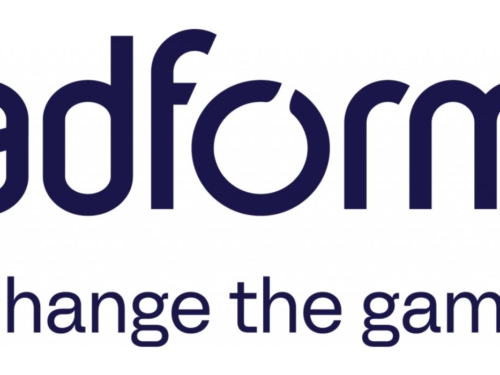Privacy Sandbox By Google Shows Backdoor To The Third-Party Cookies.
For the last two years, Google has been working to remove third-party cookies from it’s Google Chrome browser. Moving forward with this aspiration Google recently announced testing some of its “Privacy Sandbox” proposals. Google wants to test the algorithm with other exchanges and demand-side platforms. It seeks to examine the process of implementation and ways to deliver a better-guarded program to its users. Google will also make sure that this solution works inside the policies of advertising auctions.
It was in late April when Google made its big announcement. Google revealed its intentions on the “Bit Request Signal Experiment.” The announcement was made by a post on GitHub, which is a collaboration stage for software developers. Google invited advertising tech firms to take part in the testing so that they can receive some real-time algorithm test results. They affirmed the uncertainty of dates for live testing of Privacy Sandbox. They still wanted ad firms to respond to them, affirming if they are enthusiastic to help.
Soon speculations and news started flooding the tech industry!
“This is an early-stage concept and we don’t have more details to share right now, We plan to publish updates and progres s in GitHub as part of the process.”, quoted a Google spokesperson on GitHub.
Google team declared discontinuing support for the third-party cookies in January. Providing an explanation stating that they want to encourage publishers, advertising companies, and other providers of browsers to come up with a new set of rules which are user-privacy centric and follow open measures for the web.
Privacy Sandbox was launched in August, the idea was to innovate the ad recurrence and behavioral advertising. Aimed to help them work on the web without using third-party cookies. In a mega event with, 163 giant tech organizations like Apple, Facebook, Axel Springer, The Washington Post, Criteo, The Trade Desk, and even Google. All are requested to share their views via. World Wide Web Consortium or GitHub to help the project succeed.
A member from the “RTB group,” from Google posted on GitHub. Sharing insights on the bigger picture and a bit clear version of the cookieless browsing. Explaining the process, he talked about how user targeting will be done. He introduced the machine-learning algorithm known as “Federated Learning of Cohorts” which will be used in the working of cookieless browsing. Further, he explained that the algorithm will group people into different segments of the audience by understanding their behavior, likely by their browsing history.
He stated that this will improve the privacy of the users. This algorithm isn’t designed to target any user in particular. Instead, it will target a group of audiences. This group is also be known as “FloCs”. The algorithm is designed to group people on the basis of their similar interests.
Google posted on GitHub stating:
“Exchanges could offer a uniform RTB interface for aggregated audience targeting to bidders regardless of the data source,”
Another post that surfaced on GitHub from Google stated the following:
“Exchanges can explore the separation between contextual and user interest components in the RTB data flow, along with hosting the ad selection logic that needs access to both components (for instance, brand safety checks for a product retargeting ad) in a sandbox.”
Google provides an exchange with options to set a “Privacy budget.” According to the budget, an exchange can request a particular unit of data. If the data limit will surpass the budget, it will lead to an error, or as a consequence the data will be preserved in greater privacy. Presenting an option for user privacy, it can easily be determined that how much data needs to be revealed?
Google is beseeching bidders and exchanges to run real-world small scale “RTB” experiments. This will help them to test the algorithm real-time bases and with live scenarios.
Tom Kershaw, chief technology officer of Rubicon Project and a member of the World Wide Web Consortium’s Improving Web Advertising Business Group, said that they welcome the proposals. But the project is in the exceptionally fundamental stage.
Another statement came from Kershaw, chairman of the Prebid.org ad tech industry organization stating that “These are experiments with a capital E, We support these initiatives but there is not a single proposal on the table close to being adoptable right now. A ton of work needs to be done.”
Another member of the Improving Web Advertising Business Group states that the project is in its evolution pipeline and it’s going to take a long time to develop a technical standard.
He also added “It’s great, given the implications of what’s at stake, that the advertising arm of Google is attempting to implement what the browser arm is doing. It’s a really important step in the process.”
Author Profile
Latest Posts
 BlogApril 4, 2023How to rank well on Amazon? Performing SEO on Amazon
BlogApril 4, 2023How to rank well on Amazon? Performing SEO on Amazon BlogFebruary 2, 2023Advertise Your Brand in the Metaverse: The Future of Digital Advertising
BlogFebruary 2, 2023Advertise Your Brand in the Metaverse: The Future of Digital Advertising MediaJanuary 25, 2023Disney+ Is All Set To Lure Advertisers And Enhance Options For User Targeting.
MediaJanuary 25, 2023Disney+ Is All Set To Lure Advertisers And Enhance Options For User Targeting. MediaJune 26, 2021Success Story Of First Programmatic Campaign In Gulf!
MediaJune 26, 2021Success Story Of First Programmatic Campaign In Gulf!













We’re a group of volunteers and opening a new scheme in our community. Your website offered us with helpful information to paintings on. You’ve done an impressive process and our whole neighborhood will be grateful to you.
http://www.graliontorile.com/
There is apparently a lot to know about this. I think you made certain good points in features also.
http://www.qr.net/info
Türkiye Haberleri
I love your blog.. very nice colors & theme. Did you create this website yourself? Plz reply back as I’m looking to create my own blog and would like to know wheere u got this from. thanks
https://freehdporn.xxx
Very interesting topic, thanks for posting.
https://www.scrumadvisory.com
Loving the info on this internet site, you have done great job on the posts.
https://dentistas.plus